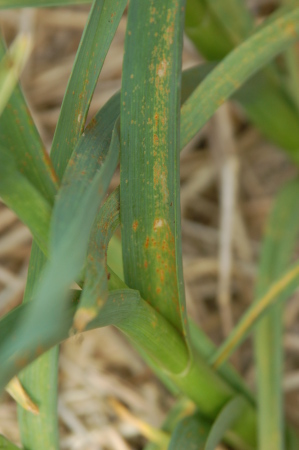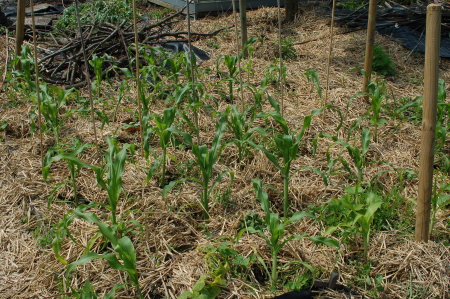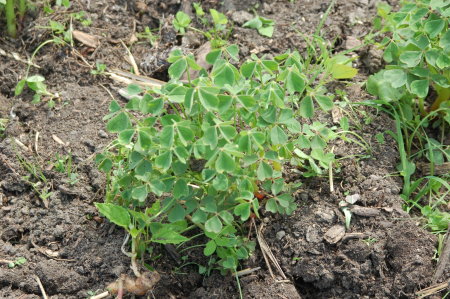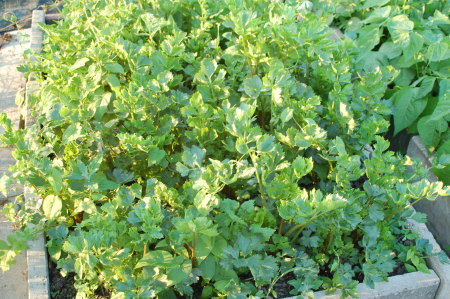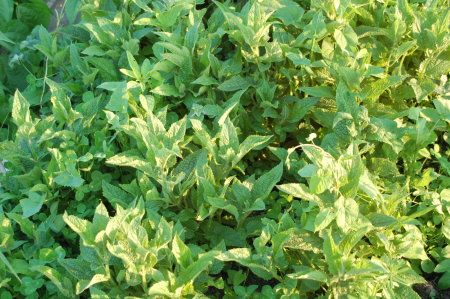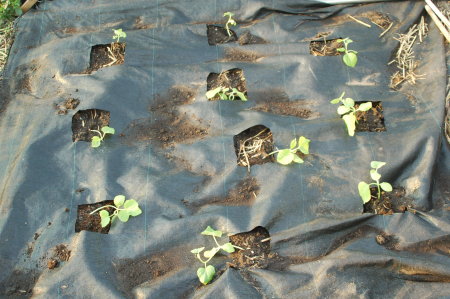Most of my hardneck varieties have formed scapes, in various stages of curling and uncurling.
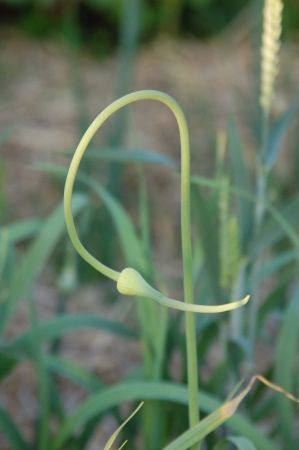
A couple of the scapes have also started opening and forming bulbils. In the past I’ve removed most of my scapes to eat and in order to promote bulb growth. This year I’m going to let most of them form. Not only am I tired of eating garlic scapes, but I’ve started to learn that bulbils are really useful. It’s easier to send someone bulbils in the mail, and it’s safer to give bulbils to other gardeners when sharing garlic because you are less likely to spread disease that way.
I am also going to try prodding the garlic plants to make some seeds. I understand this can be done by plucking out the bulbils with tweezers, which will in turn cause the scape to bloom and try to produce seeds as sort of a survival mechanism. I am not expecting success the first year doing this, and I understand it’s a lot of work and takes a lot of patience I probably don’t have.
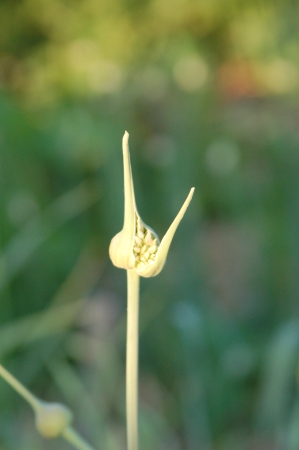
Garlic Rust has started to appear on the leaves, which is not very good news but was expected. It appeared on my garlic about the same time last year. Harvest is in about 7 weeks, so it’s just a matter of waiting and hoping it doesn’t get too bad.
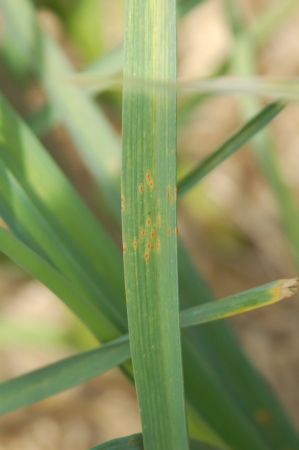
This plant has it a little worse.
